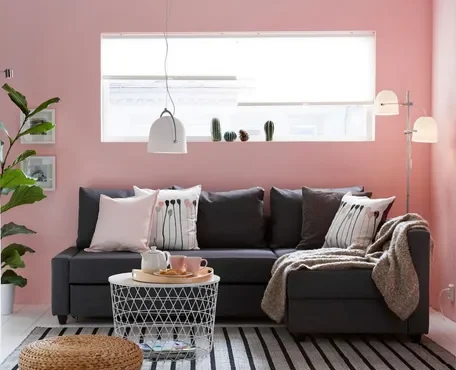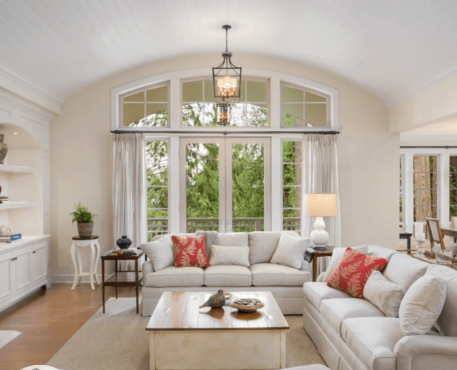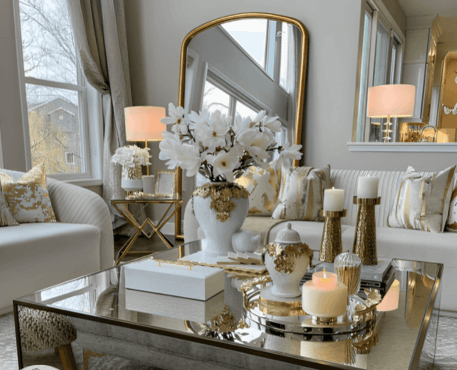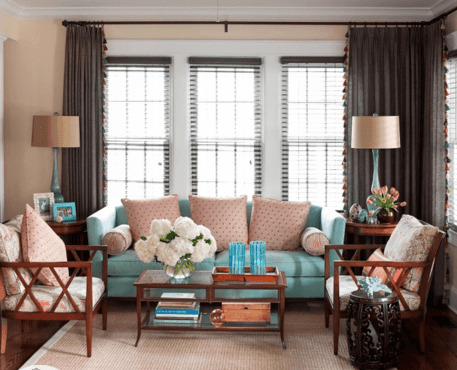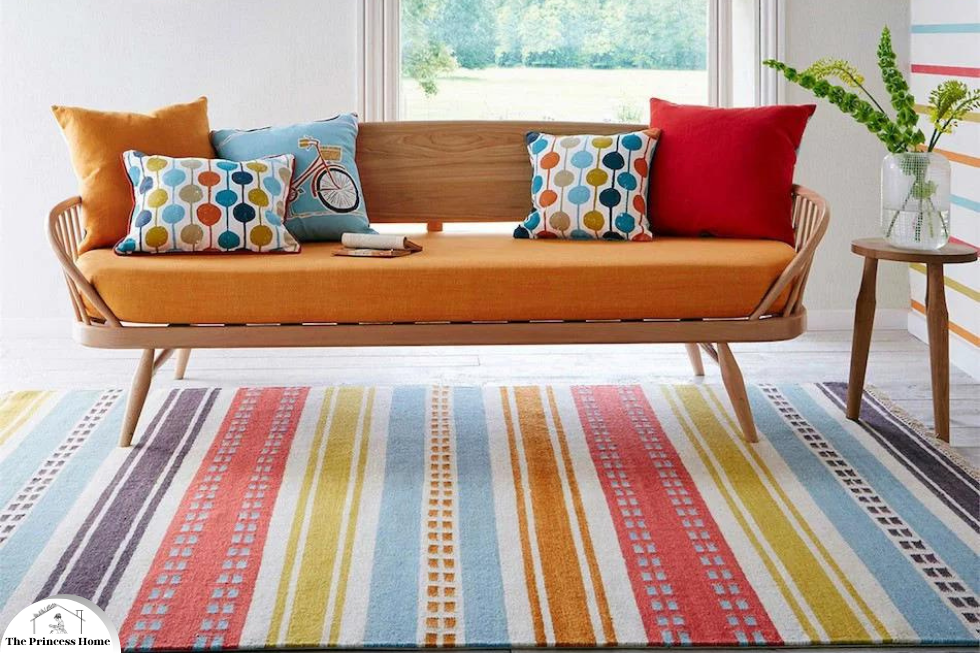
The living room is often considered the heart of a home, a space where comfort, style, and functionality converge. Among the many elements that contribute to its ambiance, carpets and rugs play a significant role. They not only provide warmth and comfort underfoot but also serve as key design elements that tie the room together. In this article, we delve into the world of living room carpets and rugs, exploring their importance, different types, selection considerations, maintenance tips, and their role in creating inviting and aesthetically pleasing living spaces.
1.*Living Room:
Choosing durable and stain-resistant materials like nylon or polyester for your living room is a smart move, especially if it’s a high-traffic area. These materials can withstand the wear and tear of daily use, making them ideal for furniture upholstery or area rugs. Neutral colors are versatile and timeless, allowing you to easily change up your decor without clashing with existing pieces. Plus, they create a harmonious backdrop for different interior design styles, whether you prefer a modern, traditional, or eclectic look. Nylon and polyester are two common types of carpet fibers, each with its own characteristics and advantages. Selecting the right carpet for your living room involves considering factors such as comfort, durability, style, and maintenance.
Material:
Consider the material of the rug based on your lifestyle and preferences. Natural fibers like wool and cotton are durable and easy to clean, while synthetic fibers like nylon and polyester offer stain resistance and affordability. Selecting the right material for your living room carpet or rug is essential for both style and functionality.
Here are some key considerations when choosing the material:
Durability:
Consider the level of foot traffic in your living room. For high-traffic areas, such as family rooms or living rooms with children or pets, opt for durable materials that can withstand heavy use without showing signs of wear and tear. Wool, nylon, and polyester are popular choices for their durability and resilience.
Comfort:
Look for materials that offer plushness and comfort underfoot, especially if you spend a lot of time relaxing or entertaining in your living room. Wool and plush synthetic fibers like polyester and nylon provide a soft, luxurious feel that adds warmth and coziness to the space.
Ease of Maintenance:
Consider your lifestyle and how much time you’re willing to spend on carpet care. Some materials, such as wool and silk, may require more frequent maintenance and professional cleaning to keep them looking their best. On the other hand, synthetic fibers like nylon and polyester are often more stain-resistant and easier to clean, making them ideal for busy households.
Allergies:
If you or your family members have allergies or sensitivities, consider hypoallergenic materials that resist mold, mildew, and dust mites. Natural materials like wool and cotton are inherently hypoallergenic, while synthetic fibers can be treated with anti-allergen treatments for added protection.
Style and Aesthetic:
Choose a material that complements the overall style and decor of your living room. For a traditional or classic look, consider wool or silk rugs with intricate patterns and rich colors. For a more contemporary or casual vibe, opt for synthetic fibers with sleek textures and modern designs.
By carefully considering the material of your living room carpet or rug, you can create a space that not only looks beautiful but also meets your practical needs for comfort, durability, and maintenance.
Here are some recommended types of carpet for living rooms:
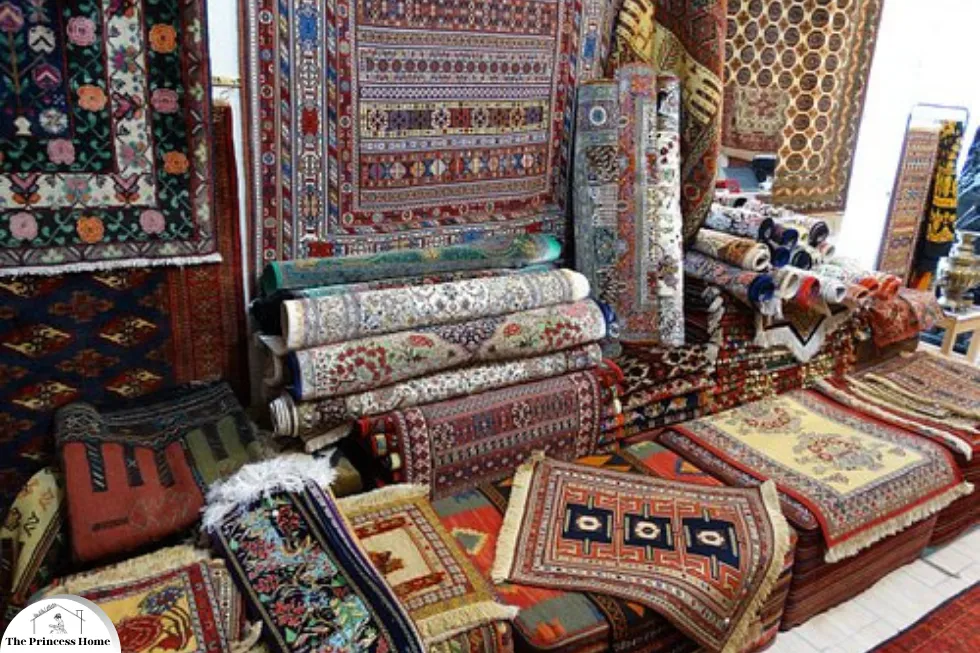
1.Nylon Carpet:
- Nylon is known for its durability, resilience, and ability to maintain its appearance over time, making it a popular choice for high-traffic areas like living rooms.
- It’s resistant to stains and easy to clean, making it ideal for homes with pets or children.
2.Polyester Carpet:
- Polyester carpets are soft, luxurious, and come in a wide range of colors and styles, making them a popular choice for living rooms where comfort and aesthetics are important.
- They’re also resistant to fading and stain-resistant, though they may not be as durable as nylon.
3.Wool Carpet:
- Wool is a natural fiber known for its durability, luxurious feel, and excellent insulating properties, making it an ideal choice for living rooms.
- Wool carpets are also naturally resistant to stains and flame-retardant, though they may require more maintenance and tend to be more expensive than synthetic options.
4.Berber Carpet:
- Berber carpets feature a loop pile construction and are known for their durability and resistance to stains and wear, making them suitable for high-traffic living rooms.
- They come in various colors and patterns, including flecks of different colors, which can help hide dirt and stains.
5.Cut Pile Carpets:
- Cut pile carpets, such as plush or Saxony styles, offer a luxurious and inviting feel underfoot, making them a popular choice for formal living rooms or areas where comfort is a priority.
- They come in a variety of colors and can add warmth and texture to your living space.
When choosing a carpet for your living room, consider your lifestyle, aesthetic preferences, and budget. It’s also essential to choose a carpet with a suitable pile height and density for your space, as well as to invest in proper padding for added comfort and durability.
nice, and resilience, making them ideal for high-traffic areas. Polyester carpets, on the other hand, offer softness, comfort, and affordability, making them suitable for areas with moderate foot traffic. The choice between nylon and polyester ultimately depends on your specific needs, budget, and preferences for performance and aesthetics.
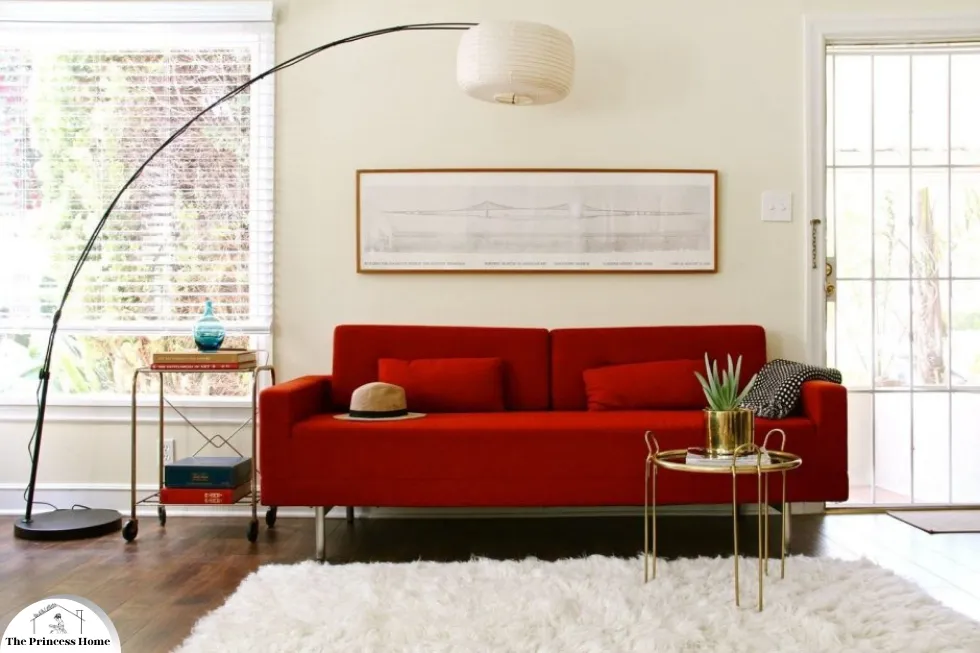
Importance of Living Room Carpets &Rugs:
Living room carpets and rugs serve multiple purposes beyond mere floor coverings. They define the seating area, anchor furniture arrangements, absorb sound, add warmth, and infuse personality into the space. Whether your living room boasts hardwood, tile, or carpeted floors, adding a rug can instantly elevate its visual appeal and make it feel cozier. living room carpets and rugs play a crucial role in enhancing both the aesthetic appeal and functionality of the space.
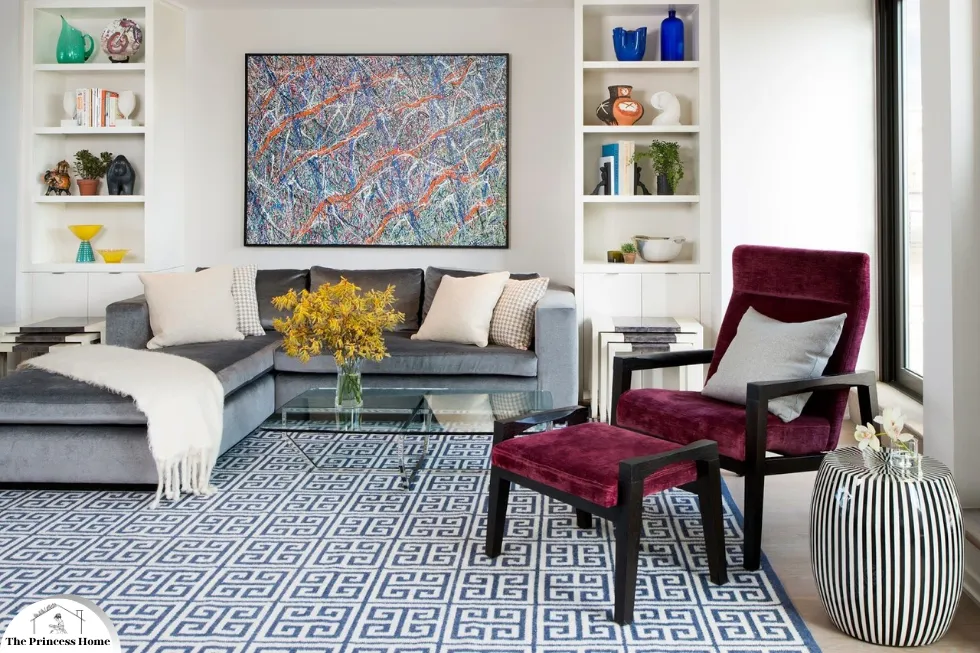
Here’s a breakdown of their importance:
1.Defining Spaces:
Carpets and rugs help define specific areas within the living room, such as seating areas or conversation zones. By placing a rug under the main furniture pieces, you create a visual anchor that delineates the space and makes it feel more cohesive. Carpets and rugs play a crucial role in defining spaces within the living room.
By strategically placing a rug under the main furniture pieces, such as sofas and chairs, you create a visual anchor that delineates the seating area or conversation zone. This not only helps to organize the room but also makes it feel more cohesive and inviting. Whether you’re aiming to create a cozy reading nook, a formal sitting area, or a casual conversation space, a well-placed rug can define the boundaries of the area and enhance the overall functionality and aesthetic of the living room.
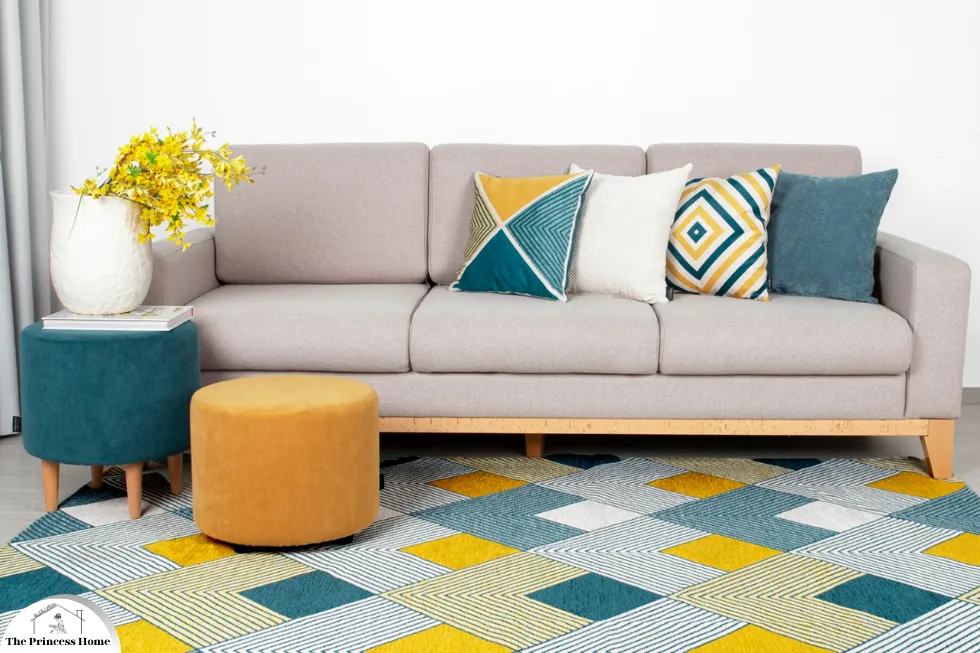
2.Anchoring Furniture:
Rugs provide a stable base for furniture arrangements, preventing pieces from sliding or shifting on hard flooring surfaces. This not only helps to protect your floors but also creates a unified and balanced look in the room. Rugs play a vital role in anchoring furniture within a room. By providing a stable base for furniture arrangements, rugs prevent pieces from sliding or shifting on hard flooring surfaces.
This not only helps to protect your floors from scratches and scuffs but also creates a unified and balanced look in the room. Additionally, rugs help to define the seating area or conversation zone within the living room, making it feel more organized and cohesive. Whether you’re arranging sofas, chairs, or coffee tables, a well-placed rug can anchor the furniture and tie the entire room together, enhancing its overall functionality and aesthetic appeal.
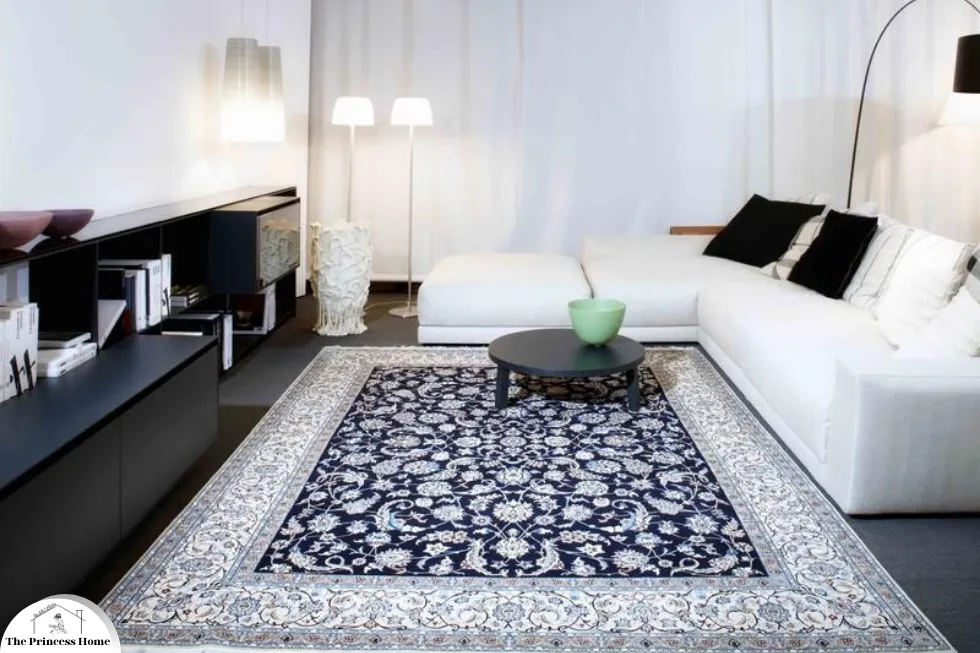
3.Sound Absorption:
Carpets and rugs absorb sound, reducing echoes and minimizing noise levels in the living room. This is particularly beneficial in open-concept spaces or rooms with hard surfaces, where sound tends to bounce off walls and floors. Carpets and rugs act as effective sound absorbers, helping to reduce echoes and minimize noise levels in the living room. This is especially beneficial in open-concept spaces or rooms with hard surfaces, such as hardwood or tile floors, where sound tends to bounce off walls and floors, creating reverberations and echoes.
By adding a carpet or rug to the space, you can significantly dampen sound transmission, making the room feel quieter and more comfortable. This is particularly important in areas where family members gather to socialize, watch TV, or engage in other activities, as it helps create a more pleasant and enjoyable environment for everyone. Overall, carpets and rugs play a crucial role in enhancing acoustical comfort in the living room, contributing to a more peaceful and harmonious living environment.
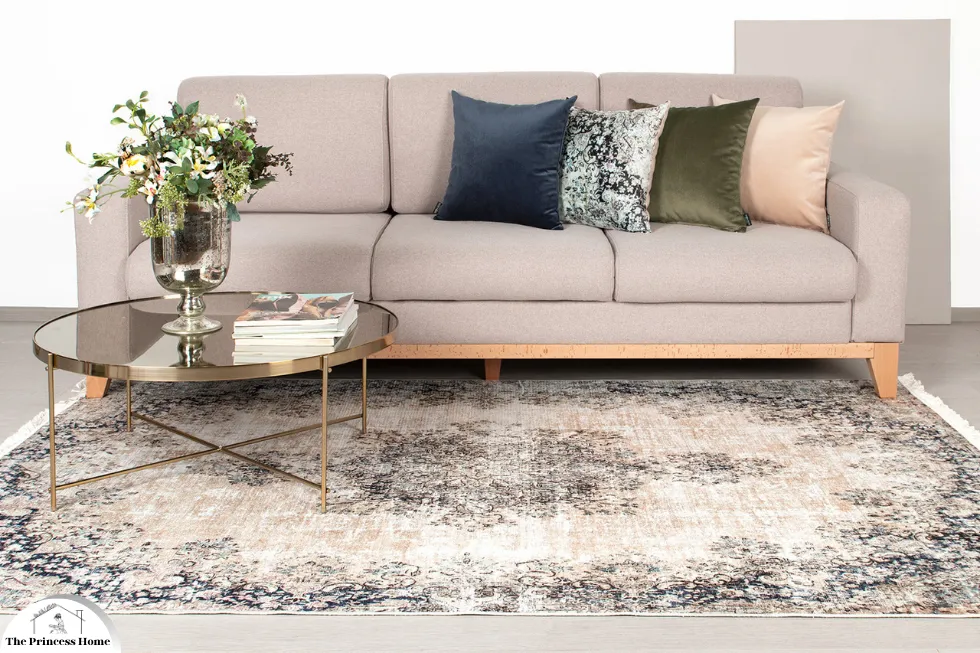
4.Adding Warmth:
In addition to providing physical warmth underfoot, carpets and rugs add a sense of warmth and coziness to the living room. Soft textures and plush materials invite you to relax and unwind, creating a welcoming atmosphere for both family gatherings and quiet evenings at home. Carpets and rugs not only provide physical warmth underfoot but also add a sense of warmth and coziness to the living room. The soft textures and plush materials of carpets and rugs create a welcoming atmosphere that invites you to relax and unwind.
Whether you’re hosting family gatherings, entertaining guests, or enjoying quiet evenings at home, the addition of a carpet or rug can make the living room feel more comfortable and inviting. Furthermore, carpets and rugs can help to visually warm up the space by adding layers of texture and color, making it feel more cozy and intimate. Overall, carpets and rugs play a crucial role in enhancing the warmth and comfort of the living room, creating a relaxing environment where you can truly feel at home.
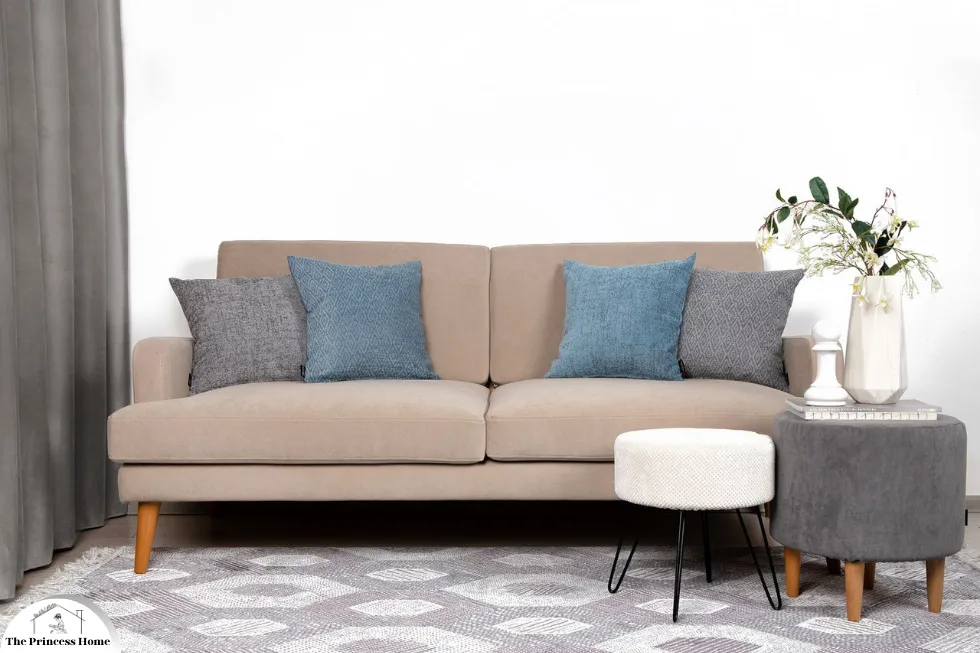
5.Visual Appeal:
Carpets and rugs come in a variety of colors, patterns, and textures, allowing you to personalize your living room and infuse it with your unique sense of style. Whether you prefer bold and vibrant designs or subtle and understated hues, there’s a rug out there to suit every taste and preference. Choose a color that enhances the overall color scheme of your living room while adding depth and contrast to the space. Neutral tones like beige, gray, or taupe can create a subtle backdrop for your furniture and decor, while bold colors or vibrant patterns can make a statement and add personality to the room.
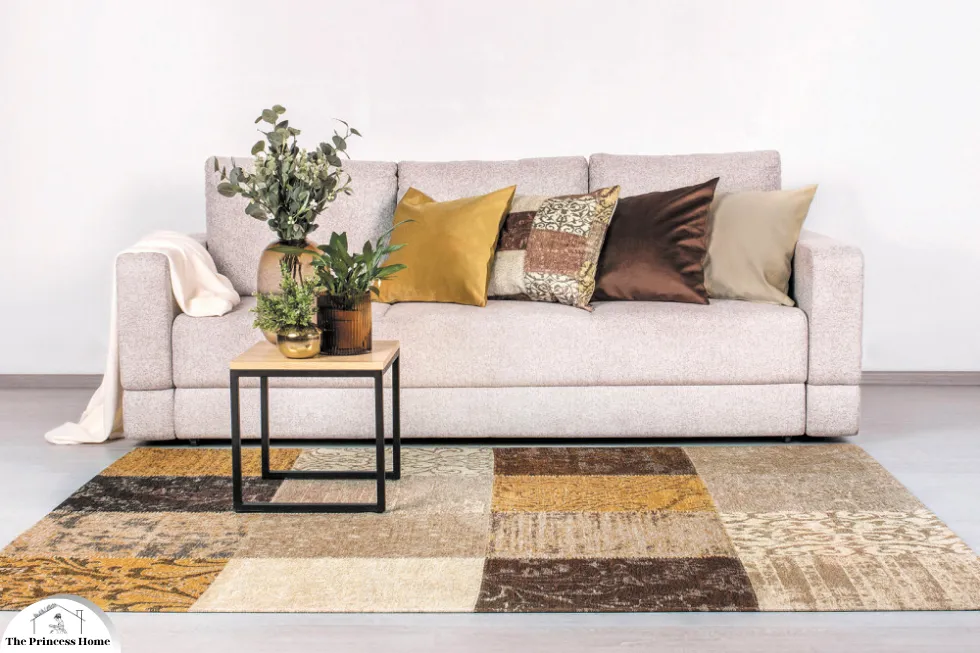
6.Easy Updates:
Carpets and rugs offer an easy and cost-effective way to update the look of your living room without undergoing a major renovation. Simply swapping out rugs or layering them can instantly refresh the space and give it a whole new vibe. Carpets and rugs provide an easy and cost-effective way to update the look of your living room without the need for a major renovation. By simply swapping out rugs or layering them, you can instantly refresh the space and give it a whole new vibe. Whether you’re looking to incorporate a new color scheme, add a pop of pattern, or experiment with different textures, rugs offer endless possibilities for customization and personalization.
Additionally, rugs can be easily moved from room to room, allowing you to change up your decor to suit your mood or the season. This flexibility makes rugs an invaluable design tool for transforming your living room and keeping your decor fresh and up-to-date without breaking the bank. Whether you prefer bold statement rugs or subtle, understated designs, there’s a rug out there to suit every style and budget, making it easy to update your living room decor and create a space that reflects your personality and taste.
Overall, living room carpets and rugs are versatile and multifunctional elements that contribute to the comfort, style, and functionality of the space. Whether you’re aiming to create a cozy retreat for relaxation or a stylish setting for entertaining guests, a well-chosen rug can make all the difference in transforming your living room into a welcoming and inviting environment.
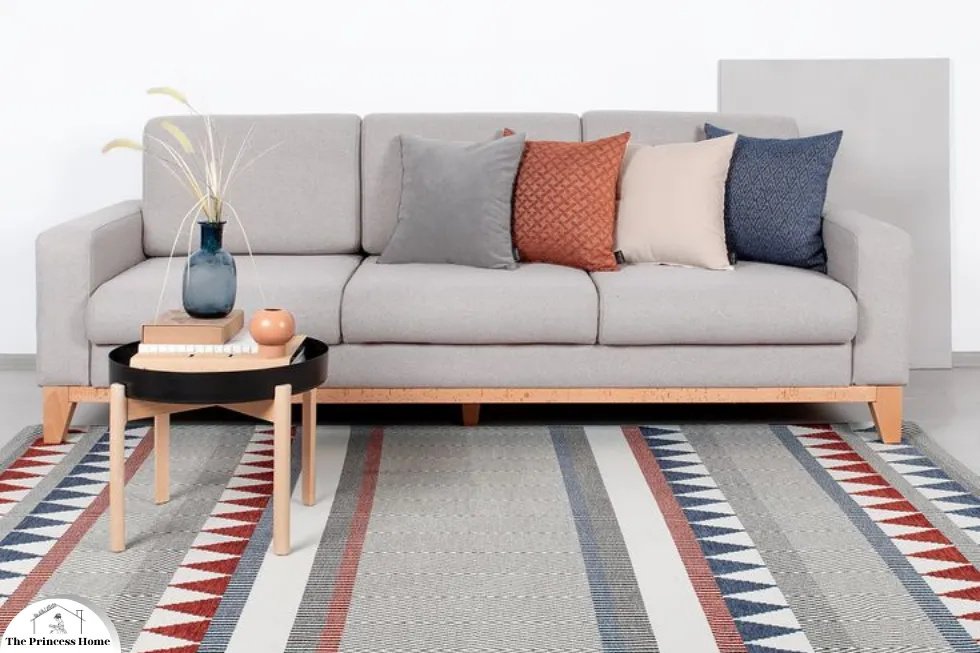
Types of Living Room Carpets &Rugs:
1.Area Rugs:
Area rugs indeed offer versatility and style to any living space. Their ability to define areas within a room and add warmth and texture makes them essential in interior design. Whether you’re looking to tie together a seating area, add a pop of color, or protect your floors, there’s an area rug out there to meet your needs.
Material choice is also important, as it affects both the look and feel of the rug. Common materials include wool, cotton, synthetic fibers like polypropylene, and natural fibers like jute and sisal. Each material has its own unique characteristics, such as durability, softness, and ease of cleaning, so it’s worth considering your lifestyle and the level of foot traffic in the room when making your selection.
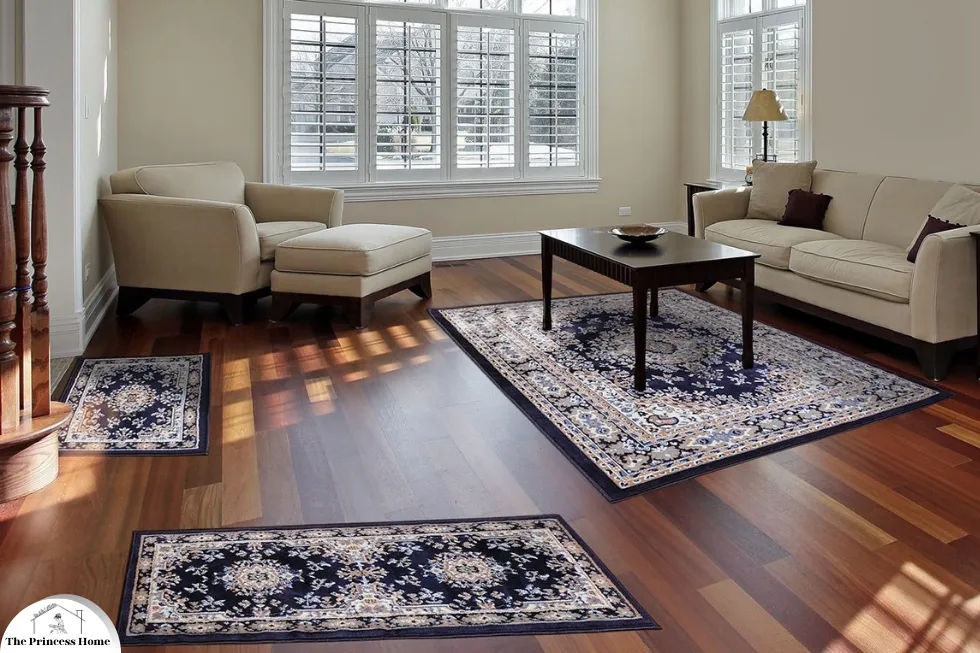
Practical Considerations:
These rugs come in various shapes, sizes, and materials, ranging from small accent rugs to large area rugs that cover a significant portion of the floor. They can be placed under the coffee table, in front of the sofa, or in the center of the seating arrangement to define the space.
When selecting an area rug, consider the size and shape of your room, as well as the furniture layout. A rug that’s too small can make the room feel disjointed, while one that’s too large can overwhelm the space. It’s generally recommended to leave a border of flooring around the edges of the rug, but this can vary based on personal preference and the layout of the room.
Lastly, don’t be afraid to get creative with your rug placement and layering. Layering rugs can add dimension and visual interest to a space, while placing rugs at angles or overlapping furniture can create a dynamic and unexpected look. Ultimately, area rugs are a fantastic way to express your personal style and elevate the design of your home.
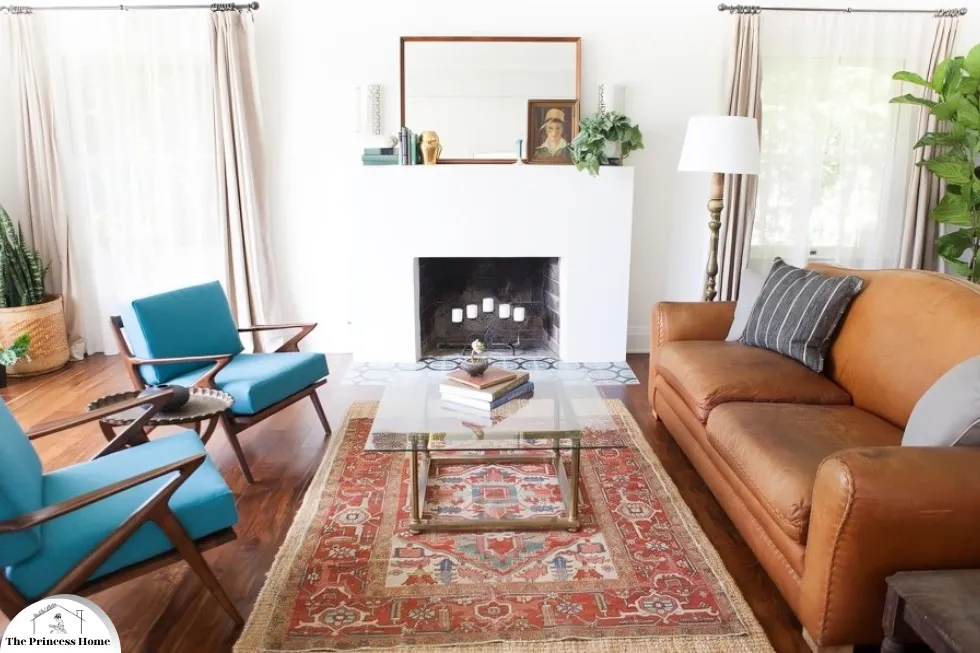
2.Runner Rugs:
Runner rugs are long, narrow rugs ideal for hallways and narrow living rooms. Placing a runner rug in the entryway or along the length of the sofa can add visual interest and create a sense of flow.
Runner rugs are indeed a wonderful addition to narrow spaces like hallways and entryways. Their elongated shape helps to visually elongate these areas, making them appear larger and more inviting. In addition to hallways and entryways, runner rugs can also be used in other areas of the home, such as along the length of a kitchen island or in a narrow living room.
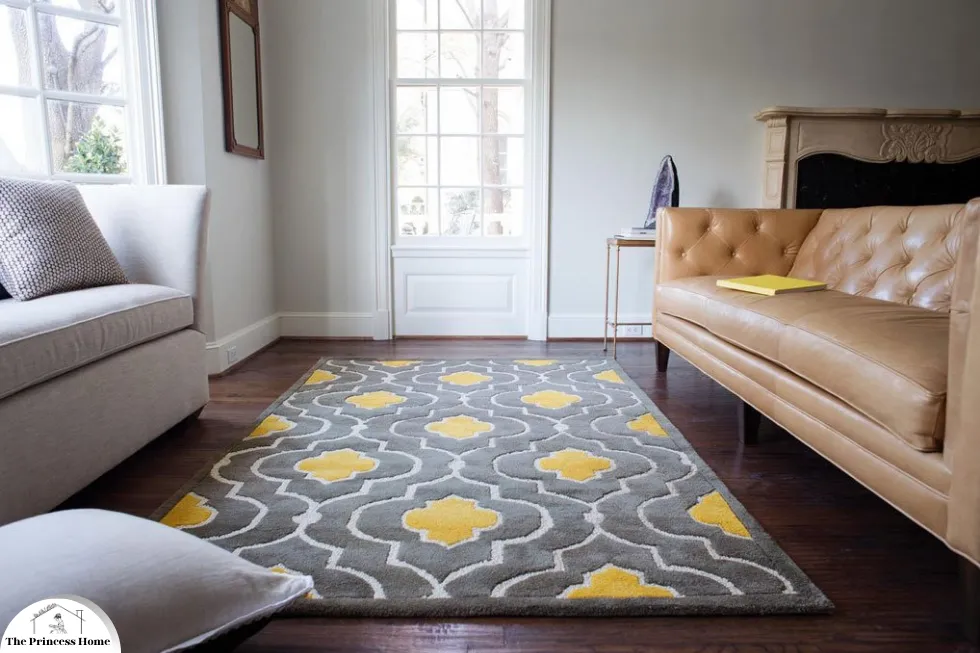
In high-traffic areas like hallways and entryways, durability is key. Look for runner rugs made from durable materials such as wool, synthetic fibers, or natural fibers like sisal or jute. These materials are not only able to withstand heavy foot traffic but are also relatively easy to clean and maintain, ensuring that your runner rug will look great for years to come.
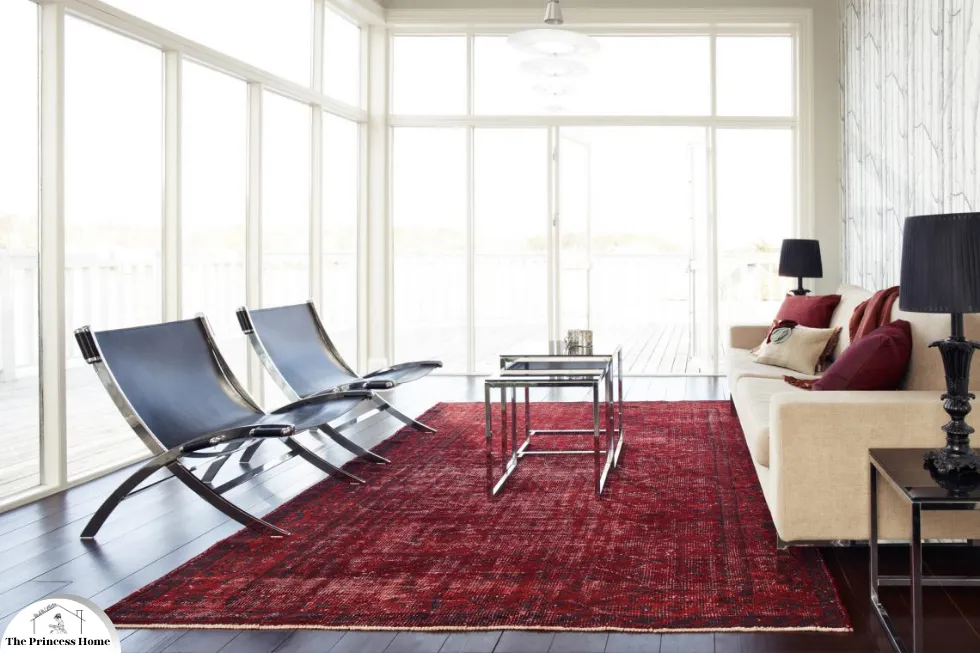
Choosing the Right Runner Rug:
When selecting a runner rug, it’s important to consider both its length and width. The length should be proportional to the space it’s intended for, while the width should allow for comfortable passage without feeling too narrow. Additionally, the style and pattern of the runner rug should complement the overall aesthetic of the room while also serving a functional purpose.
Lastly, don’t be afraid to have fun with your runner rug selection. Choose a bold pattern or vibrant color to make a statement, or opt for a more subtle design to complement the existing decor. Whatever your preference, a well-chosen runner rug can enhance the visual appeal and functionality of any narrow space in your home.
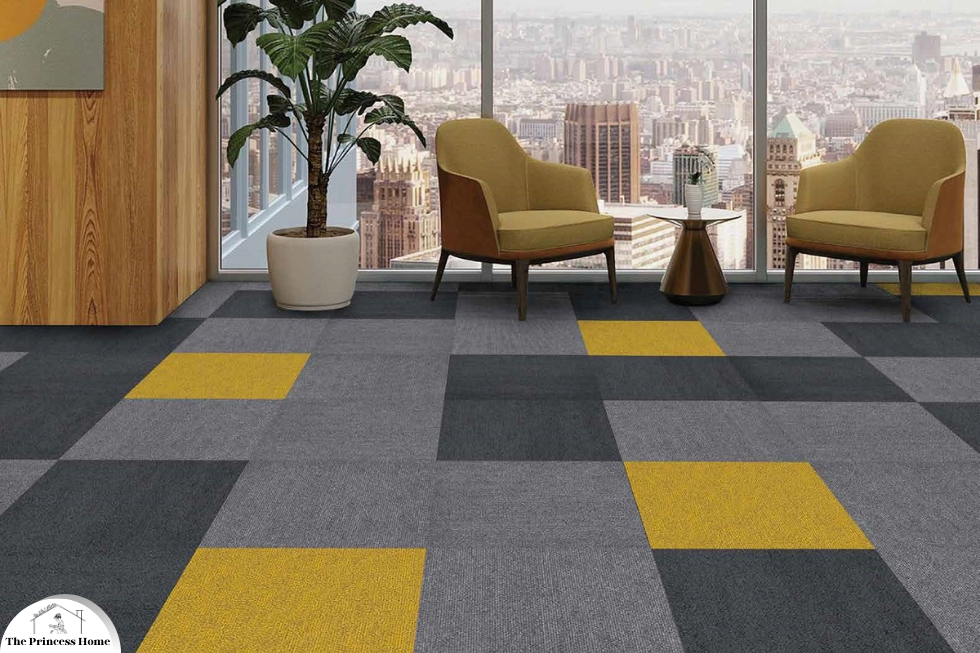
3.Carpet Tiles:
For a modern and customizable option, carpet tiles offer versatility and easy installation. Mix and match colors and patterns to create a unique look that suits your living room’s aesthetic.
Carpet tiles are indeed a fantastic option for those seeking a modern and customizable flooring solution. They offer a myriad of benefits, including versatility, easy installation, and the ability to create unique designs.
One of the key advantages of carpet tiles is their versatility. With a wide range of colors, patterns, and textures available, you can mix and match tiles to create a truly customized look that suits your living room’s aesthetic perfectly. Whether you prefer bold, geometric patterns or subtle, neutral hues, there are carpet tiles to match every style and preference.
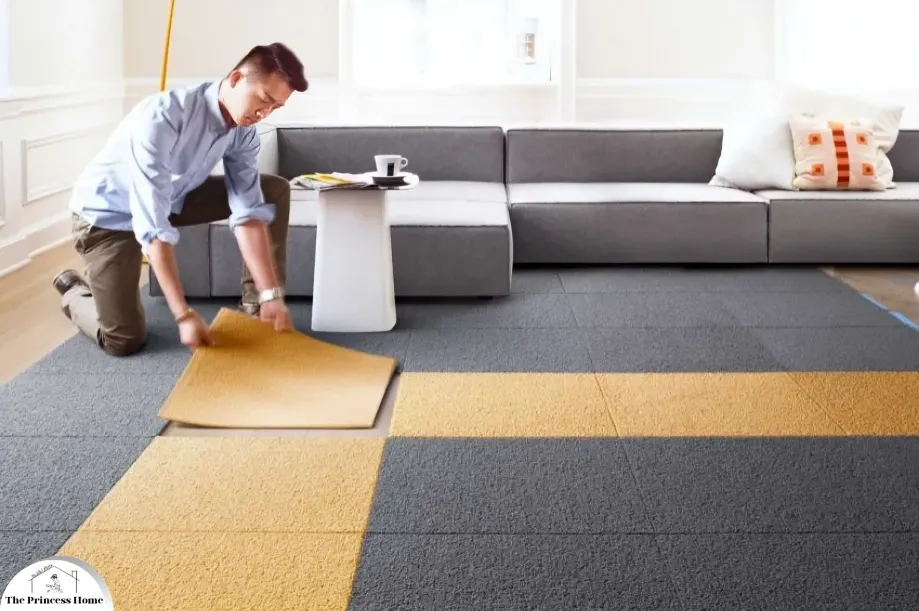
Installation is another major advantage of carpet tiles. Unlike traditional broadloom carpet, which requires professional installation and can be difficult to replace or repair, carpet tiles can be easily installed by DIY enthusiasts. Most carpet tiles come with a peel-and-stick backing or adhesive tabs, allowing for quick and hassle-free installation. Additionally, if a tile becomes damaged or stained, it can be easily replaced without having to replace the entire floor.
In terms of maintenance, carpet tiles are also relatively easy to clean. Most can be vacuumed regularly to remove dirt and debris, and many are designed to resist staining and fading, making them ideal for high-traffic areas like living rooms.
Overall, carpet tiles offer a modern and customizable flooring option that combines style, versatility, and ease of installation. Whether you’re looking to refresh your living room with a bold new look or simply add a touch of personality to your space, carpet tiles are definitely worth considering.

4.Oriental Rugs:
Known for their intricate designs and rich colors, oriental rugs add a touch of elegance and sophistication to any living room. Handcrafted from wool or silk, these rugs are timeless pieces that can be passed down through generations.
Oriental rugs are indeed revered for their exquisite craftsmanship, intricate designs, and rich history. Handcrafted using traditional methods that have been passed down through generations, these rugs are much more than just floor coverings—they are works of art that bring warmth, beauty, and a sense of heritage to any living room.
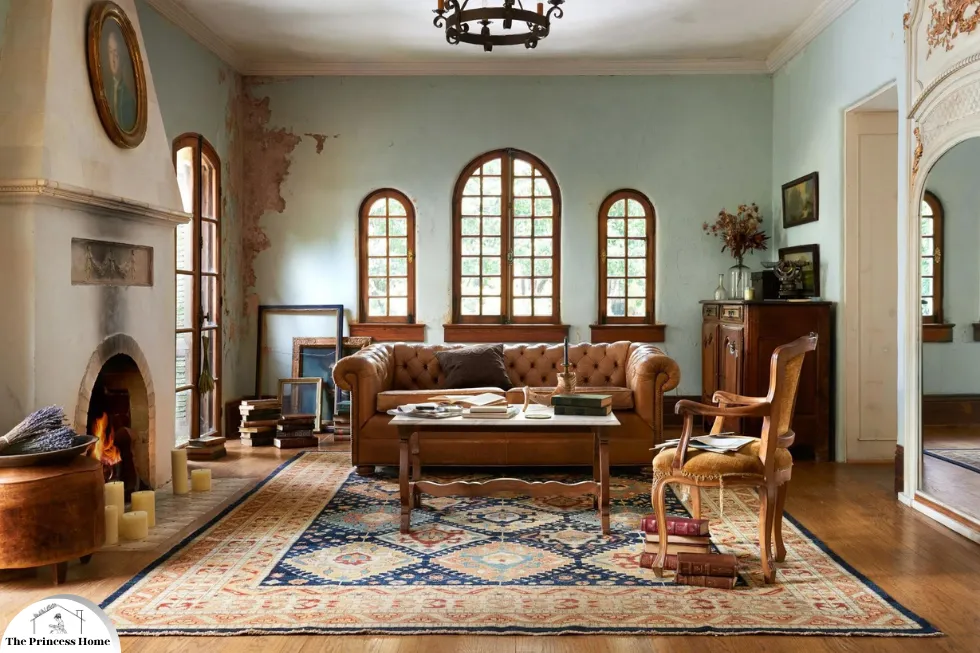
Intricate Designs:
One of the defining characteristics of oriental rugs is their intricate designs, which often feature elaborate patterns and motifs inspired by nature, mythology, and cultural symbolism. These designs are typically hand-knotted or hand-woven into the rug using high-quality wool or silk fibers, resulting in a level of detail and craftsmanship that is unmatched by machine-made rugs.
In addition to their intricate designs, oriental rugs are also known for their rich colors, which are achieved through the use of natural dyes derived from plants, minerals, and insects. These natural dyes not only produce vibrant hues that age beautifully over time but also contribute to the rug’s overall durability and longevity.
Beyond their aesthetic appeal, oriental rugs also hold significant cultural and historical value. Originating from regions such as Persia (modern-day Iran), Turkey, India, and China, these rugs often reflect the artistic traditions and craftsmanship of their respective cultures, making them cherished heirlooms that can be passed down from one generation to the next.
In summary, oriental rugs are timeless treasures that add a sense of elegance, sophistication, and cultural richness to any living room. Whether you’re drawn to their intricate designs, rich colors, or historical significance, investing in an oriental rug is sure to elevate the beauty and style of your home for years to come.
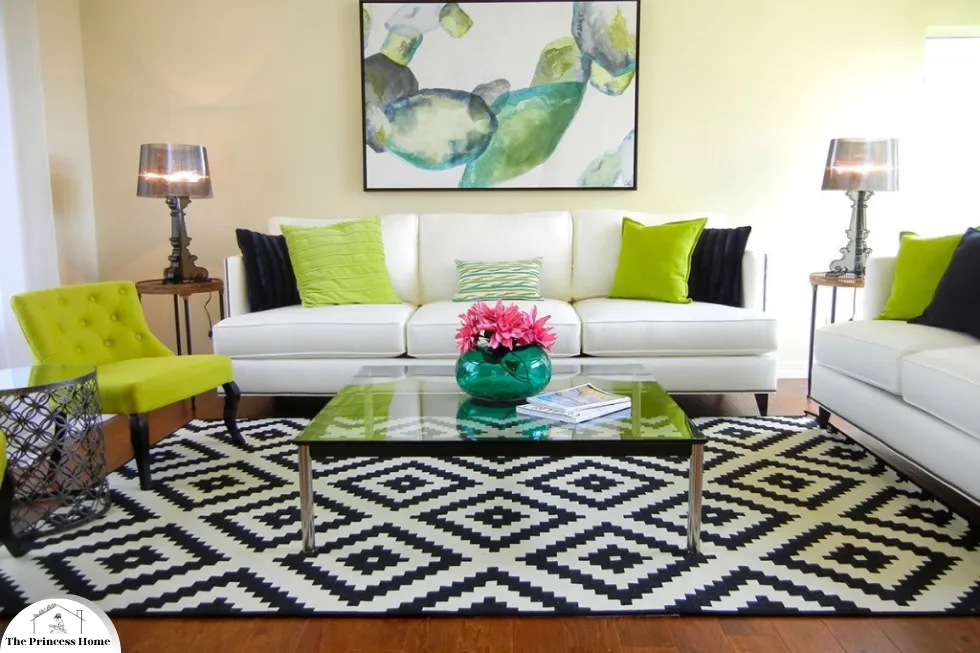
Considerations for Selecting Living Room Carpets &Rugs:
Size:
Choose a rug size that complements the dimensions of your living room and accommodates the furniture arrangement. A rug that’s too small can make the room feel disjointed, while one that’s too large can overwhelm the space. selecting the right size rug is crucial for achieving a balanced and harmonious look in your living room.
Here’s a general guideline for selecting the appropriate carpet size for your living room based on common dimensions:
1.Small Living Rooms (8′ x 10′ to 10′ x 12′):
For small living rooms, consider a rug size of 5′ x 8′ to 8′ x 10′. This size allows the rug to sit under the front legs of the furniture in the seating area, defining the space without overwhelming it.
2.Medium-Sized Living Rooms (10′ x 12′ to 12′ x 15′):
For medium-sized living rooms, opt for a rug size of 8′ x 10′ to 9′ x 12′. This size provides ample coverage for the seating area, with the rug extending beyond the front legs of the furniture to create a cohesive look.
3.Large Living Rooms (12′ x 15′ and above):
In large living rooms, consider a rug size of 9′ x 12′ to 12′ x 15′ or larger. The rug should encompass the entire seating area, with all furniture legs resting comfortably on the rug to anchor the space and create a unified look.
4.Open-Concept Living Rooms:
For open-concept living rooms that flow into adjacent spaces, consider using multiple rugs to define different areas within the room. Opt for coordinating rugs of varying sizes to create visual interest while maintaining continuity throughout the space.
5.Custom Sizes:
If your living room has non-standard dimensions or unique features, consider opting for a custom-sized rug to ensure a perfect fit. Many carpet retailers offer customization options, allowing you to create a rug that meets your specific size requirements.
Remember to measure your living room space accurately before purchasing a carpet, and consider factors such as furniture placement, traffic flow, and room shape to determine the best size rug for your needs. Ultimately, the goal is to choose a carpet size that complements the dimensions of your living room and enhances its overall aesthetic and functionality.
Let’s dive into considerations for selecting the size of your living room carpet or rug:
Here’s how to choose a size that complements your space:
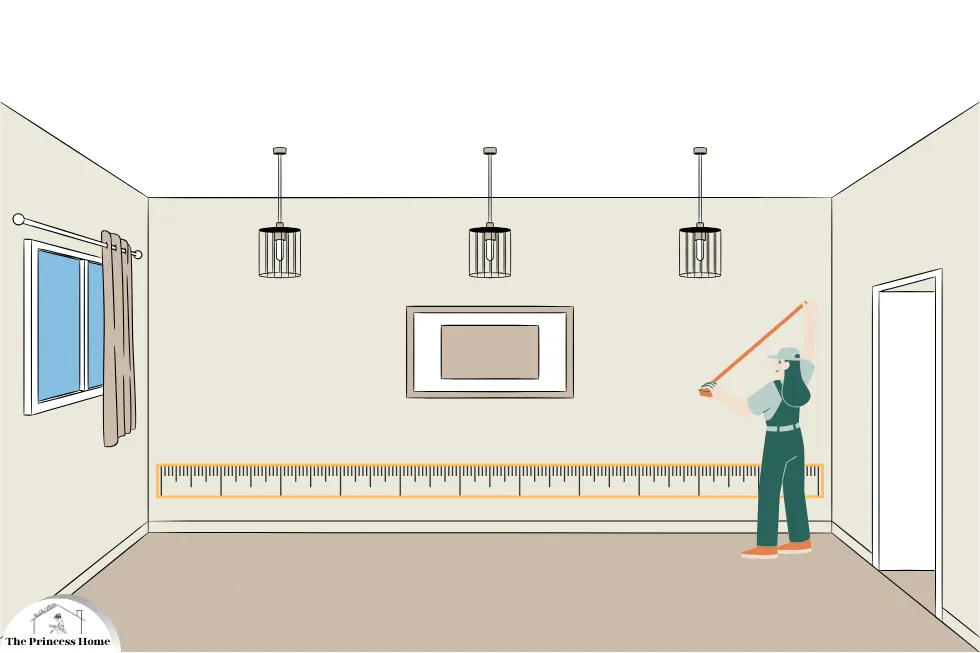
1.Measure Your Space:
Room Dimensions:
Measure the length and width of your living room space. This will give you a clear idea of the maximum dimensions you can work with for your carpet or rug. Begin by measuring the dimensions of your living room, including the length and width. This will give you a clear understanding of the available floor space and help you determine the maximum size rug you can accommodate.
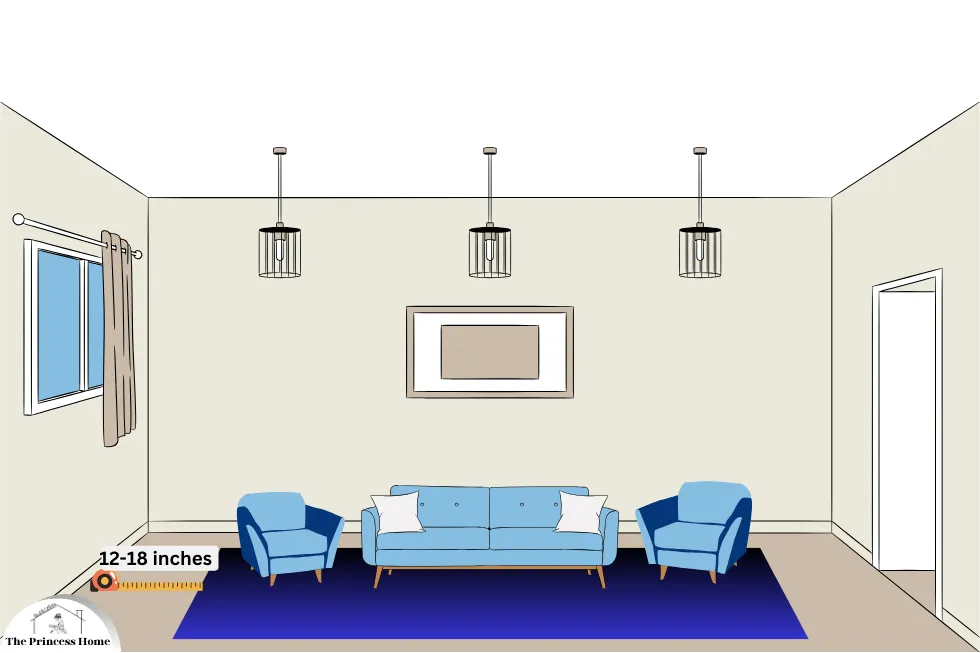
2.Leave Adequate Space:
It’s important to leave some space around the edges of the rug to create a visually pleasing border and prevent the room from feeling cramped. Aim for a border of at least 12-18 inches between the edge of the rug and the walls or other furniture pieces.
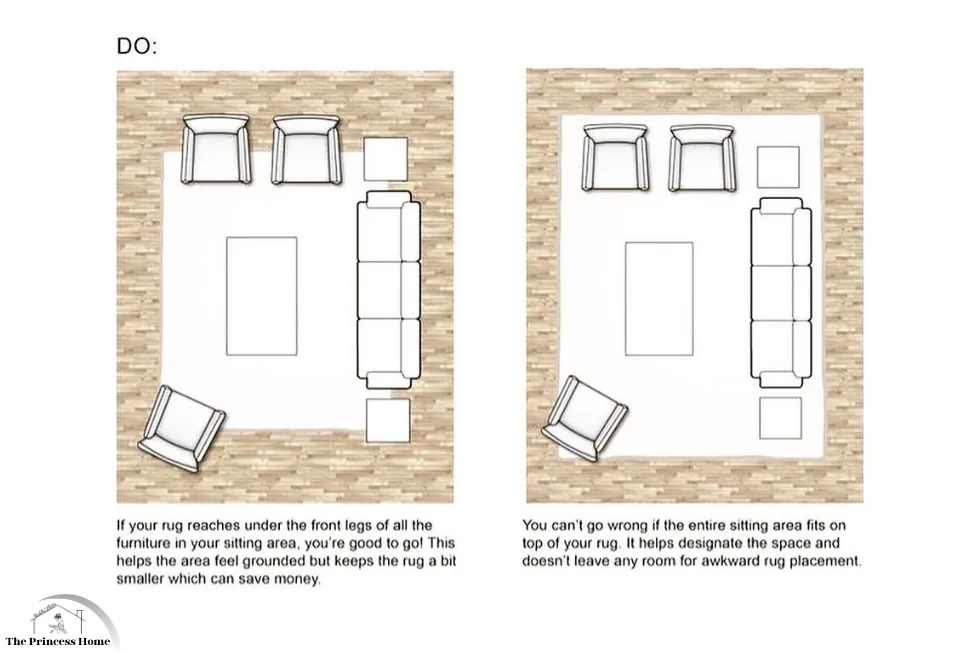
3.Consider Furniture Placement:
Furniture Placement:
Determine how you want to arrange your furniture in the living room. If you plan to have all the furniture sitting on the rug, ensure that the rug is large enough to accommodate this arrangement without feeling cramped. Think about how you want to arrange your furniture in the living room. If you’re placing the rug under the main seating area, ensure that it’s large enough to accommodate all the furniture legs comfortably. Ideally, the rug should extend beyond the front legs of sofas and chairs to create a cohesive look.
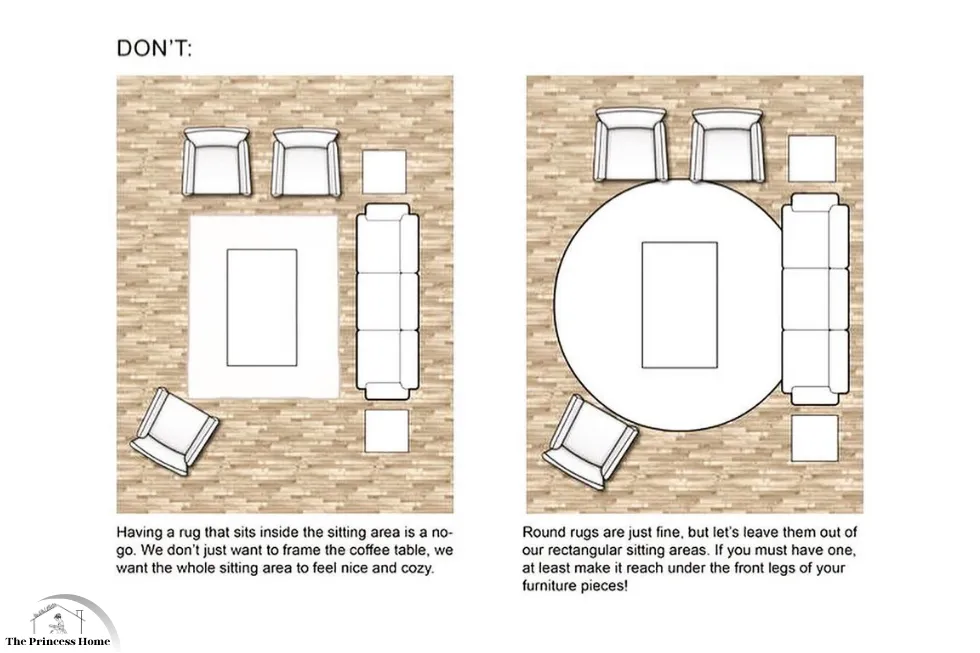
3.Visual Balance:
Strive for visual balance by selecting a rug size that complements the scale of the room and the furniture within it. A rug that’s too small can make the furniture look disproportionate, while one that’s too large can overwhelm the space. Aim for a size that feels proportionate and harmonious with the rest of the room.

4.Account for Room Shape:
Room Shape:
Consider the shape of living room when choosing a rug size. In square or rectangular rooms, a similarly shaped rug tends to work well. However, in irregularly shaped rooms, you may need to get creative with your rug placement to ensure it fits comfortably within the space. For example, in a square-shaped room, a square or round rug can work well, while in a rectangular room, a rectangular rug may be more suitable.
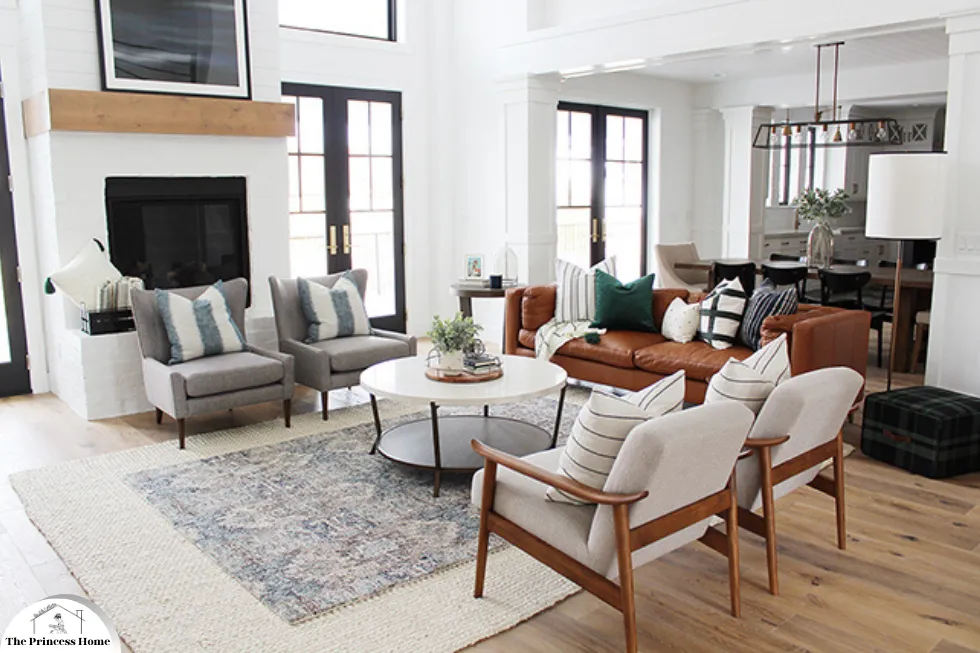
5.Consider Layering:
In some cases, layering rugs can be an effective way to add depth and dimension to your living room decor. Consider layering a smaller rug on top of a larger one to create visual interest and texture while still maintaining the proper proportions for your space.
By carefully considering these factors and selecting a rug size that complements the dimensions of your living room and accommodates your furniture arrangement, you can create a visually stunning and harmonious space that feels both inviting and well-balanced.
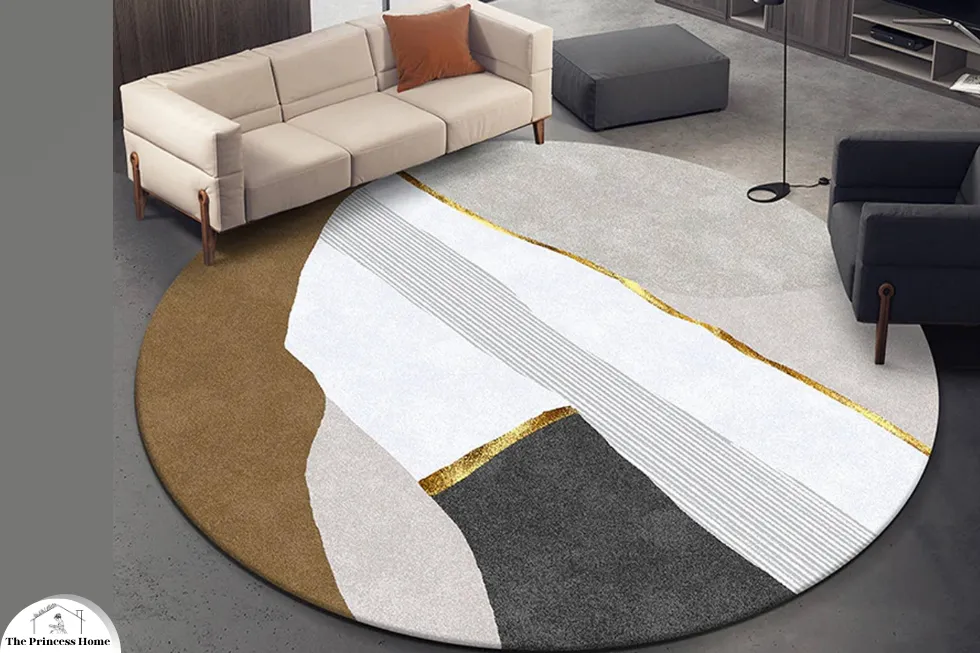
6.Circular &oval carpet
Circular and oval carpets bring softness, flow, and balance to a living room, serving as unique focal points that add elegance and versatility to the space. Their rounded shapes create a cozy atmosphere while visually expanding smaller rooms, making them a popular choice for adding style and personality to any living area.
Circular and oval carpets can add a unique and stylish touch to your living room. Here are some suggestions for choosing the right circular or oval carpet for your space:

Size:
When selecting a circular or oval carpet, consider the size of your living room and the area where you intend to place the rug. For small to medium-sized living rooms, opt for a smaller circular or oval rug, such as 6′ or 8′ in diameter. For larger living rooms, you can choose a larger size, such as 9′ or 10′ in diameter, to create a focal point in the seating area.
Placement:
Circular or oval carpets work well in the center of a seating arrangement or underneath a round coffee table. They can also be used to define a cozy reading nook or conversation area within the living room. Consider the layout of your furniture and how the rug will fit into the overall design of the room.
Style and Design:
Circular and oval carpets come in a variety of styles, patterns, and materials to suit different tastes and preferences. Choose a rug that complements the existing decor of your living room, whether you prefer a traditional, contemporary, or eclectic look. You can opt for solid colors, intricate patterns, or even textured designs to add visual interest to the space.
Material:
Consider the material of the carpet based on your lifestyle and maintenance preferences. Wool and synthetic fibers like nylon or polyester are durable and easy to clean, making them ideal for high-traffic areas or homes with pets and children. If you’re looking for a luxurious feel, consider a silk or plush shag carpet for added comfort and warmth.
Layering:
Consider layering your circular or oval carpet with a larger rectangular rug for added visual interest and dimension. This can help anchor the seating area while adding texture and warmth to the space.
By considering these factors and choosing a circular or oval carpet that fits your living room’s size, style, and functionality, you can create a stylish and inviting space that reflects your personal taste and lifestyle.

Maintenance:
Factor in the maintenance requirements of the rug, including cleaning and care instructions. Regular vacuuming, spot cleaning, and professional cleaning as needed can prolong the lifespan of your rug and keep it looking fresh.
Maintaining Living Room Carpets and Rugs:
Proper maintenance is essential to preserve the beauty and longevity of your living room carpets and rugs. Here are some tips:
- Vacuum regularly to remove dirt, dust, and debris.
- Rotate the rug periodically to ensure even wear.
- Attend to spills and stains promptly to prevent them from setting.
- Use rug pads to prevent slipping and protect the flooring underneath.
- Schedule professional cleaning as needed to deep clean and refresh the rug fibers.
Role of Living Room Carpets and Rugs in Interior Design:
Living room carpets and rugs play a crucial role in interior design, serving as focal points, color anchors, and texture enhancers. They can tie together disparate elements in the room, define functional zones, and create visual interest. Whether you opt for a bold patterned rug to make a statement or a subtle neutral rug to complement the decor, the right rug can transform your living room into a welcoming and stylish sanctuary.
Choosing the right carpet for a room can be a daunting task, and there are several common mistakes that people often make. Here are some of them:
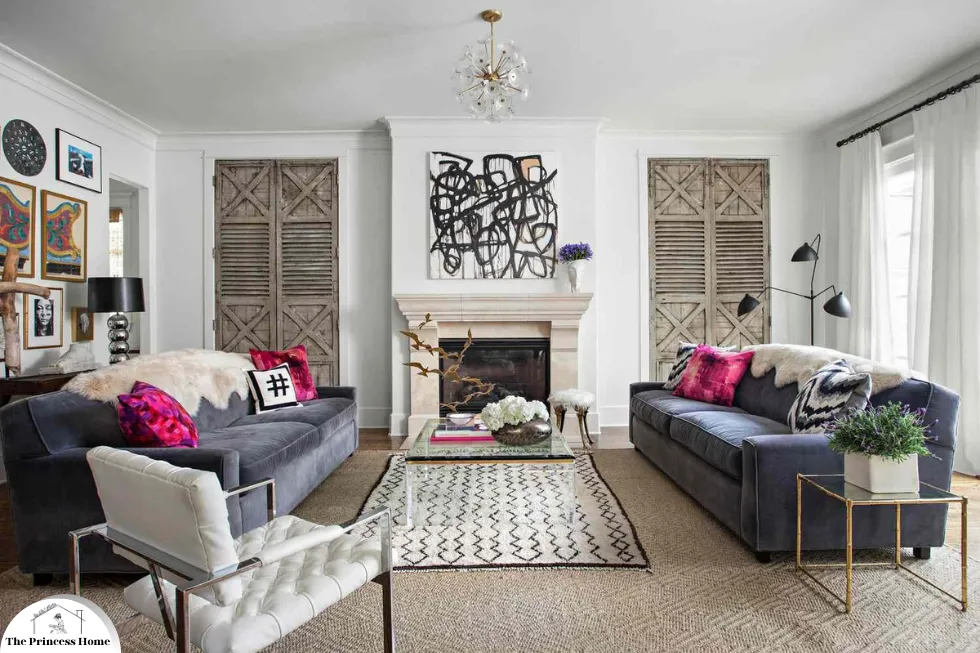
Neglecting to Measure:
One of the most common mistakes is not measuring the room accurately before purchasing a carpet. This can lead to buying a carpet that is too small or too large for the space, disrupting the room’s overall aesthetic and functionality.
Ignoring Lifestyle Needs:
Many people fail to consider their lifestyle and how it will impact the carpet’s durability and maintenance requirements. For example, choosing a light-colored carpet in a high-traffic area or a home with pets and children may lead to more frequent cleaning and premature wear.
Focusing Only on Appearance:
While aesthetics are important, solely focusing on the appearance of the carpet without considering its practicality can be a mistake. It’s essential to choose a carpet that not only looks good but also meets your functional needs, such as durability, stain resistance, and ease of maintenance.
Not Considering Room Function:
Different rooms have different functions, and the carpet should reflect this. For example, a plush, luxurious carpet may be suitable for a bedroom or formal living room, but it may not be practical for a high-traffic area like a hallway or family room.
Ignoring Lighting:
Lighting can significantly impact how a carpet looks in a room. Failing to consider the room’s lighting conditions, such as natural light versus artificial light, can result in choosing a carpet color or texture that looks different under different lighting conditions.
Skipping Carpet Padding:
Carpet padding may seem like an unnecessary expense, but it plays a crucial role in the carpet’s comfort, durability, and longevity. Skipping carpet padding or choosing an inadequate padding can result in a less comfortable and less durable carpet.
Not Testing Samples:
It’s essential to test carpet samples in the room before making a final decision. Lighting, wall colors, and other furnishings can all affect how the carpet looks in the space, so testing samples will help ensure that you choose the right carpet for your room.
By avoiding these common mistakes and carefully considering factors such as room size, lifestyle, functionality, and aesthetics, you can choose the perfect carpet for your room that not only looks great but also meets your practical needs and lasts for years to come.
Conclusion:
Choosing the perfect carpet or rug for your living room involves careful consideration of factors such as size, material, style, and maintenance requirements. By selecting the right rug that complements your decor and meets your lifestyle needs, you can enhance the comfort, style, and functionality of your living space. Whether you prefer a cozy wool rug, a vibrant oriental rug, or a sleek modern carpet tile, investing in quality flooring can elevate your living room to new heights of sophistication and charm.
Here are some frequently asked questions about living room carpets and rugs along with their answers:
1.What size rug should I choose for my living room?
The size of the rug depends on the dimensions of your living room and the furniture arrangement. As a general rule, opt for a rug that’s large enough to accommodate all the key furniture pieces in the seating area, with at least a few inches of rug visible around the edges.
2.How do I clean and maintain my living room rug?
Regular vacuuming is essential to remove dirt and debris. For spills and stains, blot the area immediately with a clean cloth and mild detergent. Avoid using harsh chemicals or abrasive cleaners, as they can damage the rug fibers. Additionally, rotate the rug periodically to ensure even wear, and consider professional cleaning for deep cleaning and maintenance.
3.What are the best materials for living room rugs?
The best material for your living room rug depends on your lifestyle and preferences. Natural fibers like wool and cotton are durable, soft, and easy to clean, making them popular choices. Synthetic fibers like nylon and polyester offer stain resistance and affordability, making them ideal for high-traffic areas.
4.How can I prevent my rug from slipping on hardwood floors?
To prevent your rug from slipping on hardwood floors, use a rug pad underneath. Rug pads provide traction and cushioning, preventing the rug from sliding and protecting the flooring underneath. Be sure to choose a rug pad specifically designed for hardwood floors to avoid damage.
5.Are oriental rugs suitable for modern living room decor?
Yes, oriental rugs can complement modern living room decor beautifully. Their intricate designs and rich colors add a touch of warmth and sophistication to contemporary spaces, creating an eclectic and layered look. Pairing an oriental rug with sleek, minimalist furniture can create a striking juxtaposition of styles.
6.How do I choose a rug that complements my existing decor?
When choosing a rug for your living room, consider the existing decor style, color scheme, and furniture. Look for a rug that complements the colors and patterns already present in the room while adding visual interest and texture. Pay attention to the rug’s design, material, and size to ensure it harmonizes with the overall aesthetic of the space.


